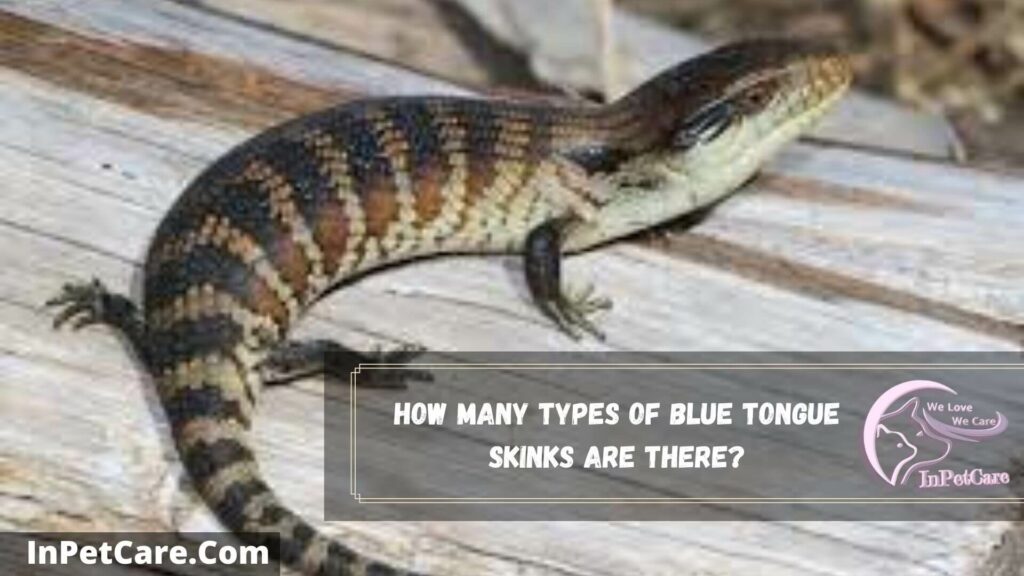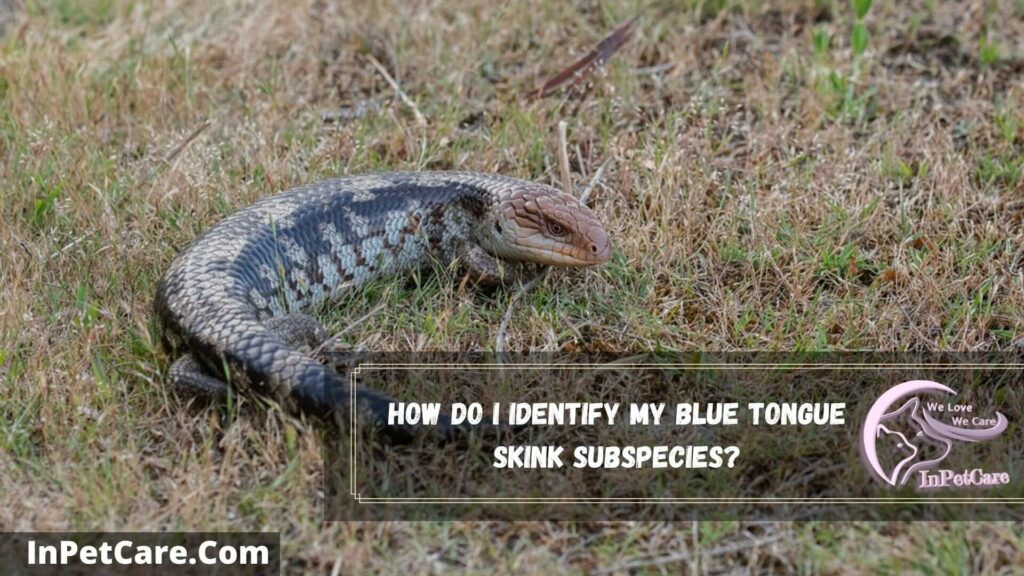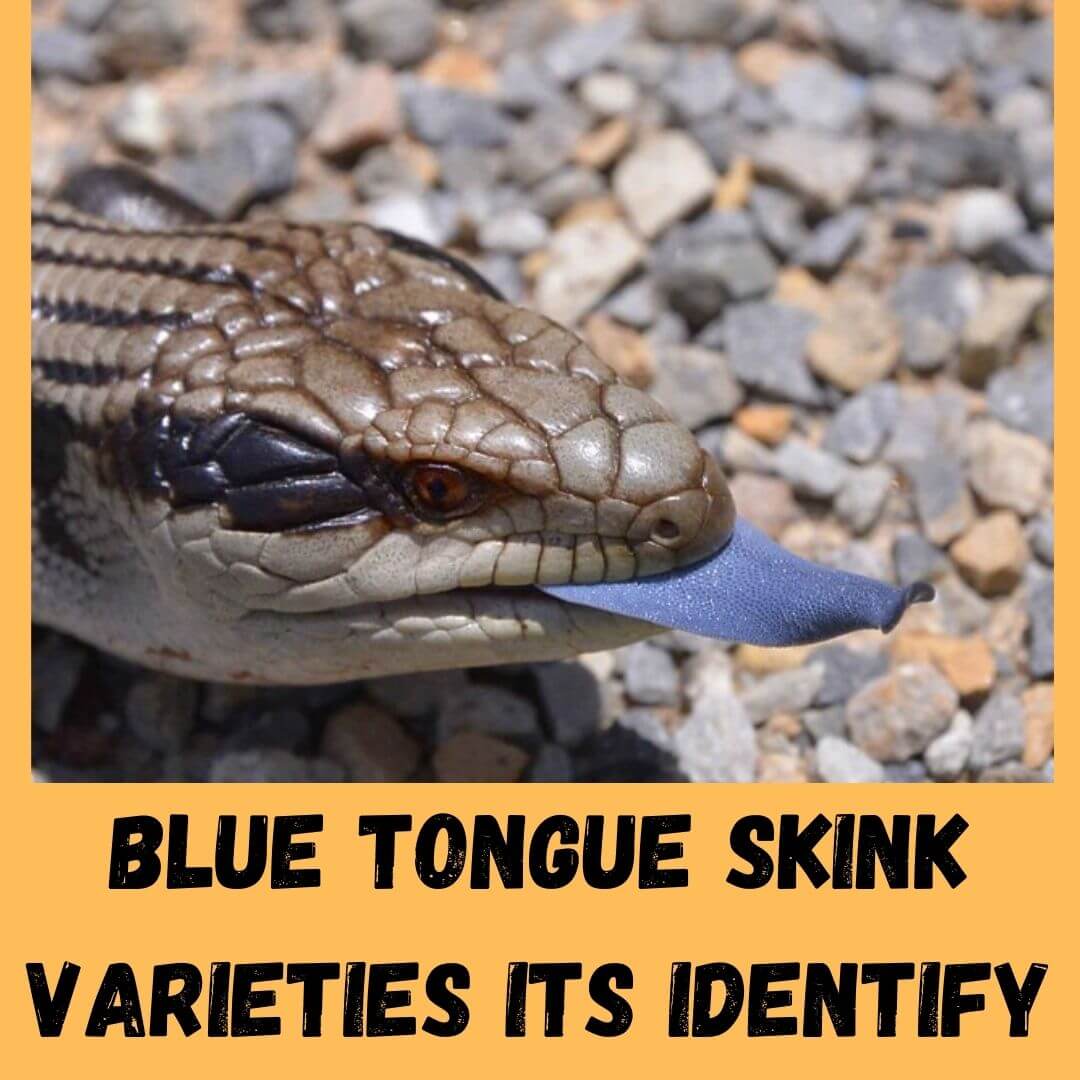There are many Blue Tongue Skink Varieties but some are easy to identify, Many lizard enthusiasts debated how many types of blue tongue skinks are there in the wild but never came to a conclusive answer. Today, in this article, we will learn every kind of blue tongue skink available globally.
We will learn about the types of bluetongue lizard species found in the wild and kept as pets. Only a few out of many species of blue tongue skink can be kept as pets. Some of them are also illegal to have. Many species of skinks are endangered. Let’s first learn how many types of blue tongue skinks are there.
Post Contents
How Many Types Of Blue Tongue Skinks Are There?

There are 10 main types of blue tongue skinks in the wild. Northern, Centralian, Indonesian, and Western skinks are the popular ones. Northern blue tongue skinks are the popular pets kept by the majority of lizard keepers & breeders. Whereas eastern, blotched, Kei Island and Merauke skinks tend to be expensive.
From here, we can learn about the blue tongue skink varieties, their identity, and the best blue tongue skinks to have. We will also learn about the largest blue tongue skink species. Let’s know about blue tongue skink varieties and their specialty.
Blue Tongue Skink Varieties
Western, Centralian, Eastern, Northern, Blotched, Pygmy, Indonesian, Kei Island, Tanimbar Island, and Merauke blue-tongued skinks. are blue tongue skink variety.
| Blue Tongue Skink Varieties | Uniqueness |
| Western Blue Tongue Skink | Large Skink Native To Australia, Brown-banded Pattern Across The Body |
| Centralian Blue Tongue Skink | Robust Build, Short Body, Slender Tail |
| Eastern Blue Tongue Skink | Native To Australia, Stout Body, Short Legs |
| Northern Blue Tongue Skink | Largest And Heaviest Of All Blue Tongue Skinks, Distinctive PatterninG |
| Blotched Blue Tongue Skink | Known Popular As The Southern Blue-tongued Lizard, Robust Body, Short Limbs |
| Pygmy Blue Tongue Skink | Thought To Be Extinct But Rediscovered In 1992, Endangered Species |
| Indonesian Blue Tongue Skink | Eastern Blue-tongued Lizard’s Close Relative, Need High Humidity, Fairly Lean |
| Kei Island Blue Tongue Skink | Green With Brown Or Black Stripes & Splotching, Somewhat Similar To The Indonesian Skink Species |
| Tanimbar Island Blue Tongue Skink | Thick Heads & Torsos, Short Limbs & Tails. |
| Merauke Blue Tongue Skink | Longest Of All, Native To Indonesia And Papua New Guinea, Known As The Faded Or Giant Blue Tongued Skink |
What Is The Best Blue Tongue Skink?
The most famous blue tongue skink species is the northern blue tongue skink. The other skink that is best and longest of all is Merauke blue tongue skink. It is always best to keep the popular pet in your home.
Popular pets tend to be suitable for all people and their needs. For breeding, Indonesian, Northern, Centralian, and Pygmy blue tongue skink are best.
How Do I Identify My Blue Tongue Skink Subspecies?

Identifying these lizards is relatively easy with the blue tongue sticking out. Their blue tongue helps them scare off the predators. However, determining blue tongue subspecies can be complicated, so we are going to learn how to identify blue tongue skink subspecies.
The genus in which these lizards are present also contains many other most prominent members of the skink family. All of them are commonly known as blue tongue lizards or blue tongue skinks. One of the most notable characteristics of these lizards is their large blue tongue that they usually stick out as a bluff warning to potential threats or Predator. Let’s learn what a blue tongue lizard looks like.
What Do Blue Tongue Lizards Look Like?
Blue Tongue lizards are giant terrestrial lizards that come with a blue-violet to cobalt blue color tongue. They vary in color but with a banded pattern. They usually go in their very stout bodies with short legs. Being Diurnal, they are omnivores and ovoviviparos. They’ll have cream or yellow blotches on their back.
What Do Baby Blue Tongue Lizards Look Like?
Baby blue tongue lizards will look very cute in a bunch and will have coffee color polygenic lines. They will look adorable and feisty. The male skink will have broader heads compared to females. Within 1-2 months, they can grow into a well-sized lizard.
How To Identify A Northern Blue Tongue Skink?
They will have bright Orange to soft peachy orange stripes on their backs and sides. Some may also have a yellowish color with darker streaks. On their back, lines are readily observed the back whereas, on their bellies, the creamy color will be noticed.
Their bright blue tongue startles off predators when needed. Talking about their limbs and legs, it tends to be very short and small compared to the width and length of the body. The male skink will have a broader head size compared to the female skink. Plus, the male blue tongue skink head tends to be wider than their own body
How To Identify An Indonesian Blue Tongue Skink?
Identifying Indonesian blue tongue skinks is relatively easy because they are close relatives to Eastern blue tongue lizards. They tend to be pretty lean and come under the subspecies of Tiliqua Gigas.
Another Subspecies of gigas is the Merauke who is also the longest of all the other skink species. There are three subspecies of the Tiliqua Gigas Line. All of them hail from the tropical environment of Indonesia, Merauke, and Papua New Guinea.
How To Identify A Shingleback Blue Tongue Lizard?
The Shingleback blue tongue lizard comes under the Tiliqua Rugosa binomial name. Tiliqua Rugosa also has 4 different subspecies. The Western Shingleback is found in western Australia, while the Eastern Shingleback is from eastern Australia.
The Shingleback blue tongue lizard is the only subspecies that are native to Eastern Australia. It also has some subspecies like Rottnest Island bobtail or Northern shingle back blue tongue skink. They usually come with a short tail and move very slowly.
They come with a cumbersome armored body with different colors ranging from cream to dark brown. Their heads will look triangular with bright blue tongues. Their tail contains fat reserves for future brumation in winter.
As I told you, it tends to have a short tail, and the shape will be similar to its head. The stumpy bottom is what I observed.
What Is The Largest Species Of Blue Tongue Skink?
The largest of all skink species is the Northern blue tongue skink species. They’re true native to Australia and can be extensively found in the Northern region. Their life span tends to be at least 20 years, and they are being popularly kept as pets.
Being the largest, Northern Blue Tongue Skinks are also one of the most popular pet lizards. It is also a subspecies of eastern blue tongue lizard but has distinctive patterns.
In the wild, when the breeding season arrives, the male Northern blue tongue skinks pick up scent marks and find a suitable female for mating. The mating between them is aggressive and if you are planning to breed skinks, then read our guide on how to produce a blue tongue skink.
Conclusion
In this article, we learned the varieties of blue tongue skins available in the wild and how to identify them. It is easy to tell the difference between male and female skink but not easy to determine its species.
Bluetongue species and their genus have many giant lizards making it hard to identify all of them. Skinks tend to be similar insignificant features. However, I tried to give you all the information needed on blue tongue skink varieties and tell you what skink subspecies it is.
I hope I managed to give you all the information needed, and if you have any other concerns, comment below. Make sure to check out our other guide, where I have shared a complete detail on how to care for a blue tongue skink. I hope I will get a chance to help you out through another article as well. Until then, take care and goodbye.

94% of pet owners say their animal pal makes them smile more than once a day. In 2007, I realized that I was made for saving Animals. My father is a Vet, and I think every pet deserves one. I started this blog, “InPetCare”, in 2019 with my father to enlighten a wider audience.
